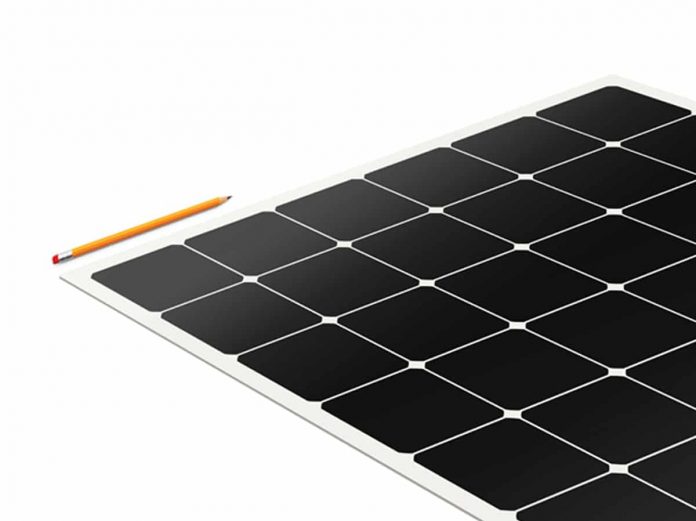Maxeon, the international spin-off of SunPower, said it plans to launch its Air series of panels in Europe. The company’s chief revenue officer Mark Babcock recently spoke with pv magazine to talk about the Air series as well as Maxeon’s vision for U.S. manufacturing.
Among the company’s production line are two classes of solar PV modules, the Performance series, shingled bifacial panels with applications in utility scale and large commercial projects, and a line of interdigitated back contact (IBC) panels, of which Maxeon Air is just one.
The Air series, to launch in Europe, is a pencil-thin IBC module that lessens weight load on roofs.
The company selected Europe to launch the panel given the number of low-load commercial and industrial roofs on older buildings throughout the region, said Babcock.
The adhesive back-contact eliminates the need for racking and other balance-of-system (BOS) components to be placed on the roof. This opens the door for many roofs that would otherwise lack proper structural support to adopt PV, as the panels have a load of 6 kg per square meter.
Babcock said that unlike most panels, the module can bend and crack without experiencing significant degradation and without creating hotspots, allowing for more flexible applications. Babcock said he sees possibility in integrating the IBC panels in transportation and off-grid solutions, but, for now anyway, the focus will be on commercial rooftops.
Babcock said that thermal runaway and hotspots are curbed through the modules’ ability to share load with neighboring panels. The Air panels also mitigate installation defects that cause fires, like installing wires on the sharp edges of a rack or mount.
While Maxeon has no firm plans of launching Air in the U.S. just yet, its performance series panels are already operating under the SunPower brand. The Primergy and Quinbrook Infrastructure-backed 690 MW Gemini solar and storage project of Nevada will be powered by Maxeon performance 5 and 6 series panels, which are manufactured in Malaysia, assembled in Mexico.
U.S. manufacturing
Babcock said future expansion into U.S. manufacturing is being explored, but plans hinge on federal policy. He said a 3 GW cell manufacturing facility in the U.S. is waiting on an Energy Polict Act of 2005-established Title XVII loan from the U.S. Department of Energy; it also may depend on the success of Sen. Jon Ossoff’s (D-GA) Solar Energy Manufacturing for America Act. Babcock said that adoption of the bill would make U.S. expansion a more attractive prospect to Maxeon, and likely would draw in other industry players, as well.
Pending the DOE loan and the Ossoff bill, Maxeon said it may begin producing cells in the U.S. as soon as 2023.
Babcock also said that the Biden administration’s Build Back Better bill that was narrowly approved by the House of Representatives has language for direct incentives for both cell and module manufacturing. He said that the inclusion of an incentive for both would go a long way towards making the case for siting manufacturing in the U.S.
In October, Maxeon said it planned to convert its production facility in Mexicali, Mexico to manufacture shingled modules exclusively for the U.S. market.
The two facilities should reach a capacity of around 2.6 GW, Babcock told pv magazine in a separate interview during the Intersolar event in Munich, Germany. He said at the time that the facility in Ensenada was ramping up to 800 MW with the one in Mexicali planned for 1.8 GW of capacity.
Both facilities will manufacture only products based on the company’s mono PERC shingled technology.
Production should start at the two facilities late in the first quarter of 2022.






